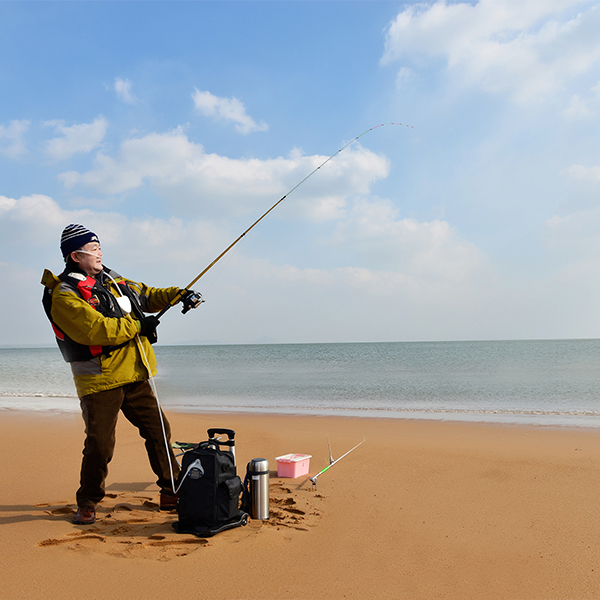How to Choose the Right LoveGo Oxygen Concentrator

Choosing an oxygen concentrator can be overwhelming, especially if your doctor has prescribed you with oxygen for the first time. There are so many different types, brands, features and terms, that getting to know all these can be quite a challenge.
When choosing a concentrator, it’s important to consider the following:
1. Oxygen flow rate and Purity
Usually doctor will write or print oxygen dose and oxygen therapy time in the prescription. If doctor write 3LPM or 3 liters/min in prescription, that means 3 liters oxygen with 90% saturation. Please make confirmation that machine could produce 90% saturation oxygen at 3 liters at least. There are many devices just produce 70% saturation oxygen or less when you turn up flow to 3 liters.( oxygen saturation less than 90% is not allowed by medical oxygen therapy. Insufficient oxygen maybe worsen illness and be harmful to your family member life) Another thing to consider is choose bigger oxygen flow than your family member need. If his oxygen prescription is 3LPM, we suggest you choose a device which has capacity of above 3 liters flow with 90% oxygen saturation. Your family member might need more oxygen in winter and in future. You need to take it into consideration.
LoveGo oxygen concentrators can provide you with a variety of oxygen flow rates, from 1 LPM until 10 LPM.
Model | LoveGo G1 | LoveGo G2 | LoveGo G3 | Home Oxygen Concentrator |
Oxygen Flow Rate | 1LPM | 0.5-1.8LPM continuous flow (0-5L pulse flow) | 0.5-2.5LPM continuous flow (0-7L pulse flow) | 2LPM- 10LPM |
2. Charging time and battery life
Depending on whether you spend most of your time outdoors and frequently go on trips, one priority when choosing an oxygen concentrator is it’s battery life. It also depends on how long you are away from a power source and how active you plan to be.
Choosing a concentrator with a longer battery duration and a quick charge time is important. Note that using a lower LPM will require lesser energy, while needing a higher LPM will use up more battery power. Thus, it’s a must to check the battery time, charging time and power requirements before purchasing a portable oxygen concentrator.
Model | LoveGo G1 | LoveGo G2 | LoveGo G3 |
Battery duration | 1 hour at any flow | 2 hours at all flows | 5 Hours at 3LPM pulse flow and 8 Hours at 1LPM pulse flow |
Charging time | 4-5 hours | 4-5 hours | 4-5 hours |
Power source | Battery, Electrical and Vehicle Power Supply | Battery, Electrical and Vehicle Power Supply | Battery, Electrical and Vehicle Power Supply |
Others | Can work in car charger and cigarette lighter | Can work in car charger and cigarette lighter | Can work in car charger and cigarette lighter |
For home oxygen concentrators, you may have to note the amount of electricity needed, especially for prolonged and continuous use even up to 24 hours a day. The amount of electricity can also depend on the oxygen flow rate you need. Higher flow rates require using more electricity of over 500 watts.
LoveGo’s home oxygen concentrator works at voltages of 100-240 volts, but can be adapted to work under other voltages as well. Consmption is at 640 watts, while being able to supply flow rates of 2-10 LPM. It’s also able to work continuously, 24 hours a day, 7 days a week without stopping. Plus, it can be moved easily by pushing to accommodate for convenient movement around the house.
3. Portability, size and weight
Another important aspect when choosing a concentrator is its portability. Consider your lifestyle and how active you are. If you’re frequently on the go, after choosing a machine with longer battery life, you need to choose one that’s light and easy to carry around.
All LoveGo portable concentrators weigh about 5.8-6.8 kilograms with battery. They’re on the lighter side, so they’re easy to take with you anywhere. You can also opt to purchase a trolley, which allows you to easily pull along the concentrator on trips outside the home or even when doing chores around the house, garden or yard.
4. Alarms
After making sure that the important requirements are meet, such as oxygen flow rate and battery time, it’s also a good idea to check out other features available to the oxygen concentrator you wish to buy. Alarms are important because the let you know when something is wrong when you using the machine, such as power off, lower purity, no breath,battery power indicator and so on.
All of LoveGo’s oxygen concentrators except LG101 are equipped with a “low oxygen alarm.” This alarm goes off when the machine detects a drop in oxygen saturation. This is important because a machine that delivers less than optimal oxygen saturation can cause harm to the user. For example, one that delivers below 80 % oxygen when it should be delivering 90% oxygen will cause a lack of oxygen to the user, who may experience a sudden depletion of oxygen in the blood and tissues. Such symptoms of this may include faintness, wheezing, and can lead to other medical complications.
The machine’s alarm also goes off in cases where there the battery is low, when it suddenly loses power, when there is no oxygen flow, or if there are technical system errors.
Now that you know how to choose the right oxygen concentrator, take a look at our products and check out which is the right one for you!
Author: Lianne Laruan



